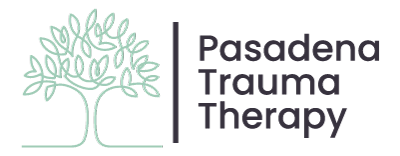Pasadena Trauma Therapist
Founder and Director of Pasadena Trauma Therapy, Inc.
MFC #49234
Pronouns: She/Her/Hers
I am a Licensed Marriage and Family Therapist as well as a Certified EMDR therapist in Pasadena, CA. I am an LGBTQIA+ and BIPOC affirmative therapist. I work predominately with adult trauma survivors/ Complex PTSD (sexual abuse, emotional abuse, neglect, physical abuse, dissociation, incest, cult survivors, etc). I also help clients work through issues of attachment disorders, depersonalization/derealization, anxiety, depression, relationship difficulties, codependency issues, etc.
My main approach in working with trauma truly lies in doing Parts Work using the Internal Family Systems (IFS) lens. We all have parts of ourselves, that show up differently (each with their own thoughts, feelings and motivations) depending on who we are with. When it comes to trauma, parts of the self could be stuck in time. In other words, the adult part of the self has already survived the worst. However, symptoms from the past, such as panic, anxiety, body memories, nightmares, etc. continue to show up as a reminder of the trauma. This could be a form of communication from inner child parts that are still needing attention. In using IFS, trauma survivors can see that “All Parts All Welcome.” When these parts of the self are heard, validated, and made to feel seen, they can be unburdened from their old ways of survival. I believe we all have an innate capacity for healing and it would be my honor to help you uncover yours. For an introductory video to learn more about IFS, please click here.
I also use the following Trauma Modalities in my practice:
- EMDR Certified
- Brainspotting: Level 1 & 2, David Grand’s Master class, and Expansion Brainspotting
- Trauma Resiliency Module (somatic therapy)
- The Havening Techniques®
- TF-CBT
- Complex Trauma Certification Training Level 1 & 2 (CCTP/CCTP-II) Course with Janina Fisher (specific training to treat Complex Trauma and Dissociative Disorders)/Parts Work
- Sensorimotor Psychotherapy
- Trauma Regulation Integration Process (T.R.I.P)
All modalities are very effective in treating traumas.
Eye Movement Desensitization and Reprocessing (EMDR) is a form of psychotherapy that has been successful in helping people who suffer from trauma, anxiety, panic, disturbing memories, nightmares, etc. EMDR uses bilateral stimulation (such as eye movements or tapping) while the client attends to past memories and triggers in an effort to decrease or eliminate emotional distress connected to the memory.
Brainspotting is a somatic therapy that helps clients access the subcortical (non-verbal) part of the brain, where trauma is typically stored. According to the creator of Brainspotting, David Grand, “where you look affects how you feel.” Since our eyes give us access to the subcortical brain, Brainspotting uses the visual field as a way to help release stored memories. If you’d like more information on Brainspotting, please click here.
Trauma Resiliency Module(TRM) is a somatic approach that helps clients with traumatic stress reactions by learning skills to help stabilize the mind and body. Clients will learn to track body sensations and bring balance back to the nervous system. I am a Certified TRM practitioner.
The Havening Techniques® are powerful tools that can be used to treat the consequences of encoded traumatic or stressful memories. It is designed to change the brain to de-traumatize memory and remove its negative effects from both our psyche and body. I am a Certified Havening Techniques Practitioner. If you’d like more information on Havening, please click here.
Trauma-Focused Cognitive Behavioral Therapy (TF-CBT) is an evidence-based treatment approach shown to help children, adolescents, and their caretakers overcome trauma-related difficulties.
Complex Trauma Certification Training Level 1 & 2 (CCTP/CCTP-II) Course with Janina Fisher (specific training to treat Trauma, Complex Trauma, and Dissociative Disorders). This modality includes Sensorimotor, Internal Family Systems (parts-work), and mindfulness strategies that help clients connect to their minds, bodies, emotions, and traumatic events without feeling overwhelmed and avoidant. Parts work makes space for the conflicts between parts of the self. For instance, there are times when you might be attempting to work through a challenging or traumatic memory within therapy.
Although you feel ready to heal, there might be a part of you that interferes with the process in an effort to protect you from vulnerable feelings that threaten your sense of self. Parts work can also look at the “inner child” part(s) that still carry pain that is stuck in time. Parts work is very effective in making clients feel seen, heard, and attuned to. This may be a modality to consider if you have been in therapy for many years without much success.
Sensorimotor Psychotherapy (SP) Level 1 actively incorporates awareness of the body, targeting the habits of physical action, autonomic dysregulation, and posture. By addressing the physical as well as the psychological effects of adverse experiences on the mind and body, SP supports a deep, effective, and unified approach to healing. SP for the treatment of trauma equips therapists to better understand the symptoms and issues related to trauma and traumatic attachment and to work with them in a more effective way. If you’d like more information on SP, please click here.
Trauma Regulation Integration Process (T.R.I.P) The T.R.I.P approach involves working with trauma and its impact on the person as a whole. This approach recognizes that frequently memories are implicit and stored at a body level. The assumption of T.R.I.P is that the body, brain, emotions, beliefs, sensations, and relationships are needing both regulation and integration for the person to feel alive, and are able to live in the present.
The T.R.I.P model has been influenced by the ideas, theories, concepts, and practices of the following therapies and seeks to integrate key aspects of each of these therapies:
- OEI – One Eye Integration/Observed & Experiential Integration
- IFS – Internal Family Systems
- SP/SE – Sensorimotor Psychotherapy/Somatic Experiencing
- EFT – Emotionally Focused Therapy
- Developmental Attachment theory – Dr, G. Neufeld (Neufeld institute)
If you would like more information on T.R.I.P., please click here.
Additional Trainings:
- When There Are No Words: Reprocessing Early Trauma and Neglect In Implicit Memory With EMDR
- Imaginal Nurturing, Ego States, and Attachment with EMDR
- The Feeling-State Addiction Protocol for EMDR
- EMDR 2.0
- Easy Ego State Interventions by Robin Shapiro
- EMDR therapy for Borderline Personality Disorder, Dissociation, and Complex Trauma
- Treating Dissociative Disorders with EMDR: The Progressive Approach by Dolores Mosquera
- Healing Survivors of Childhood Sexual Abuse by Robin Shapiro
- IFS informed EMDR
- Embracing our Legacy Burdens and Heirlooms Workshop by Osnat Arbel, PhD
- Unattached Burden’s Training by Robert Falconer
- Healing The Trauma That Surrounds Medical Syndromes with IFS by Dr. Lisa Rankin and Dr. Dick Schwartz
- Trauma Healing: Energy, Neuroscience and Spirituality with IFS by Dr. Frank Anderson
Education
- Bachelor’s degree in Psychology and Women’s Studies from The University of California, Santa Barbara (UCSB)
- Master’s degree in Clinical Psychology with an emphasis in Marriage and Family Therapy from Pepperdine University
Professional Associations
- Member of The California Associate of Marriage and Family Therapists (CAMFT)
- Member of the San Gabriel Valley CAMFT Chapter
- Member of Armenian American Mental Health Association (AAMHA)
- EMDR International Association (EMDRIA)
- Glendale Area Mental Health Professionals Association (GAMHPA)
- Dissociative Disorders Study Group (DDSG)
- Member of the International Society for the Study of Trauma and Dissociation (ISSTD)
Languages
- Armenian
- Romanian
Presentations for Mental Health Professionals
- Working with Trauma and the Body
- Working with Domestic Violence Survivors
- Working with Dissociative Identity Disorder Part I
- Working with Dissociative Identity Disorder Part II: Treating Ritual Abuse
- Working with Childhood Sexual Abuse Survivors (from a Structural Dissociation Perspective)
- Therapeutic Boundaries
- Marketing Tips for the Newly Licensed Therapist


